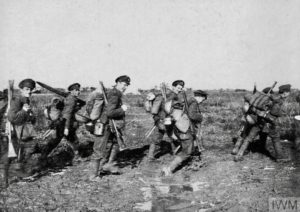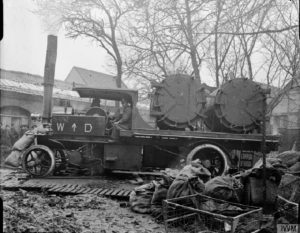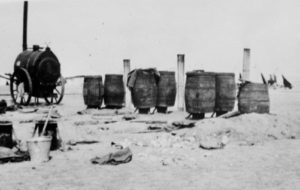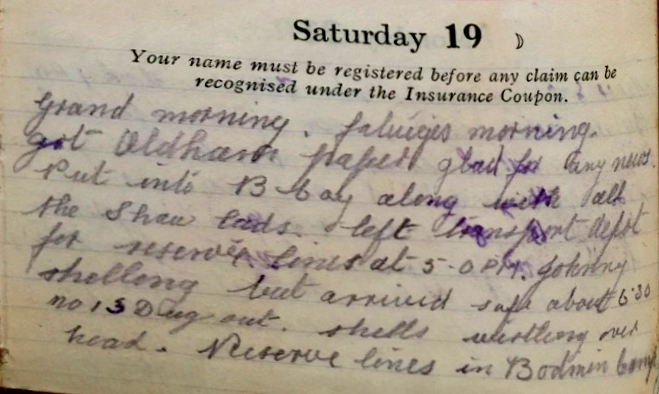Saturday Jan 19th, 1918
Grand morning, fatigues morning. Got Oldham paper – glad for any news. Put into B Company along with all the Shaw lads and left transport depot for reserve lines at 5pm. Johnny shelling but arrived safe about 6:30 at Number 13 Dugout. Shells whirling overhead. Reserve lines in Bodmin Camp.
Reserve Lines

Well it looks like Frank’s request fell on favorable ears as he and the other ‘Shaw lads’ are assigned to B Company. Today they are moving up from the transport depot to the reserve lines. The march is on foot, takes about 90 minutes and is accompanied by enemy artillery fire.
The reserve lines would have been a rather busier place than those on the Western Front. There were a few reasons for this. Firstly, the lay of the land meant that troops on the British front line made easy targets for enemy snipers and observers looking to direct artillery. Secondly, the distances between the opposing forces were often much greater than they would have been on the Western Front. This meant that the front line trenches could be reinforced in a timely manner from the protection of the reserve trenches.
Barrel Disinfectors
The Battalion diary mentions that they have instructions to ‘make the fullest use the Barrel Disinfectors so as to combat scabies and lice’.

This highlights one of the greatest concerns of the Battalion – keeping the men clean and minimizing the risk of disease. For weeks, the troops of the 13th have been on the front line, living in unsanitary and cramped conditions. They and their clothes will be filthy.
Trench Fever was unknown to the medical profession before the first cases were identified in early 1915. Its cause remained unknown for much of the war and no medicine in the standard issue drugs box or more broadly was found that could combat the disease or its symptoms. It is estimated that half a million British troops were infected over the course of the war.¹

However by this point, and long suspected, lice were known to be the carrier and lice were prevalent on men on the front lines. Without containment, they would soon infest those in the reserve and support lines.
These photograph show two types of disinfection equipment – both using steam to fumigate clothing. The Foden Steam Wagon is shown being used in France in 1917 (note the sacks of clothing waiting to be put in). The Serbian Barrel had been in use since 1915 and is credited with saving many civilian and military lives.² It is unclear which type is being used in Salonika.
13th (Service) Battalion War Diary – 19th January 1918 – Vladaja Camp
Enemy artillery and aerial activity as usual. New programme of work issued which cancels all previous ones, this is appended as Appendix IV which also includes Defence Scheme for working parties. Instructions have been received to make the fullest use of Barrel Disinfectors so as to prevent scabies and lice. 4 OR struck off effective strength with effect from 19-1-18 under GRO 1011
References & further reading
¹ ‘Trench Fever: the British Medical Response in the Great War‘
² Serbian Barrel The National Museum of Valjevo


